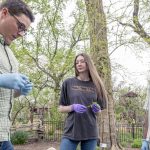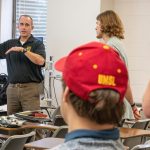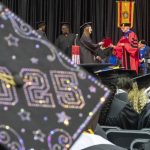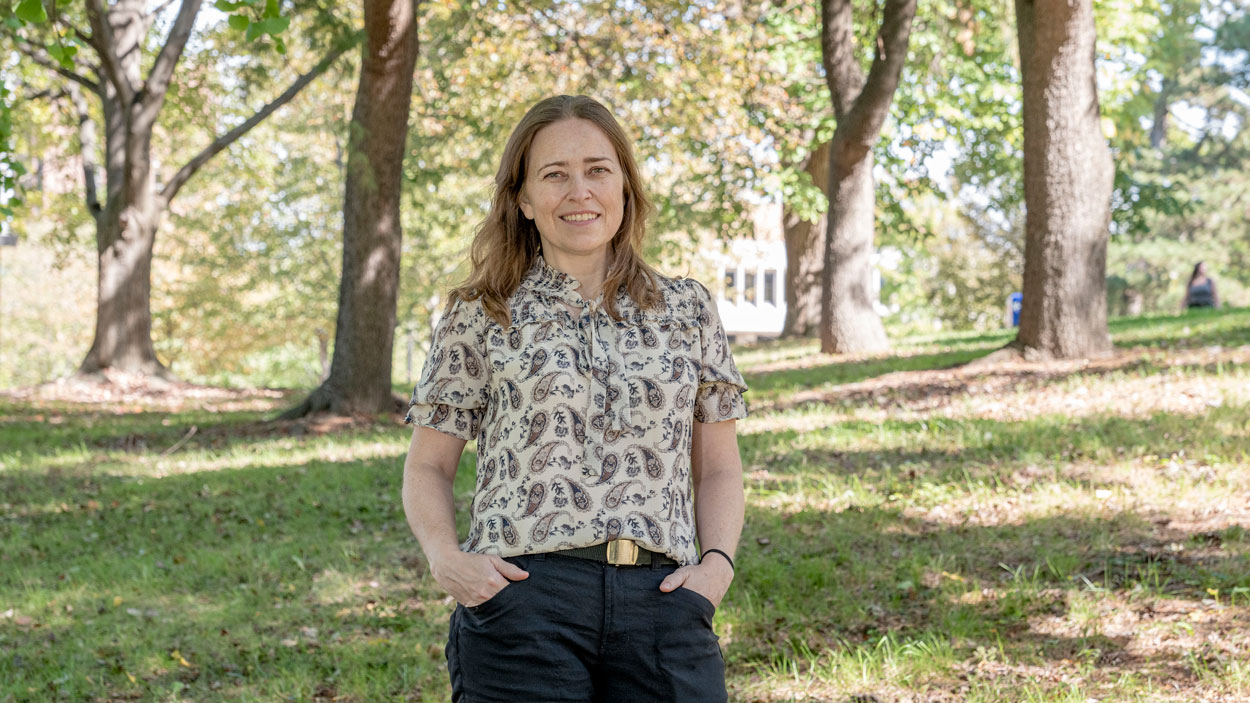
Jalene LaMontagne, the E. Desmond Lee Endowed Professor in Botanical Studies, led a team of researchers who received the 2025 Robert P. McIntosh Award from the Vegetation Section of the Ecological Society of America. (Photo by Derik Holtmann)
Perennial plants, including trees and shrubs, often engage in mast seeding – the highly variable production of seeds from one year to the next.
Think about acorn production on oaks, which can be low for a number of years in a row, followed by a year when they are super abundant.
Having highly variable reproduction across years can be good for plant populations, because the low seed production years can help limit the number of seed predators such as seed-eating birds, small mammals and insects. A year of abundant seed production, meanwhile, will satiate seed predators so some seeds survive.
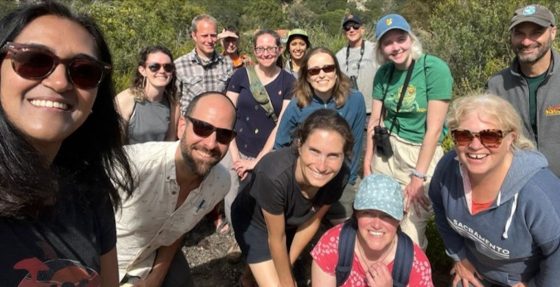
Jalene LaMontagne and her colleagues have been supported by the National Science Foundation’s Long-Term Ecological Research Network. (Photo courtesy of Jalene LaMontagne)
Jalene LaMontagne, the E. Desmond Lee Endowed Professor in Botanical Studies in the Department of Biology at the University of Missouri–St. Louis and affiliated with the Missouri Botanical Garden, has served as the principal investigator on a project examining mast seeding as it occurs among different species and trees in the same forest communities.
She has been joined by a team of 19 scientists from across the United States and as far away as the University of York in the United Kingdom on the project, which has been supported by the National Science Foundation’s Long-Term Ecological Research (LTER) Network. They gathered some of their findings in a paper titled “Community synchrony in seed production is associated with trait similarity and climate across North America,” published in a special issue of Ecology Letters on Dec. 31, 2024.
Last week, LaMontagne and her colleagues received the 2025 Robert P. McIntosh Award for the best paper in vegetation ecology published in the previous year at the annual meeting of the Ecological Society of America in Baltimore. The ESA is the largest society of ecologists in the world.
Prior studies had shown that levels of seed production are synchronous within species in the same region, so rather than a few new seedlings establishing themselves each year, there are major pulses occurring over time in which higher quantities of new plants may take root and grow. But LaMontagne and her colleagues recognized that no species exists in isolation. Their paper proposes that community-level dynamics in woody plant reproduction is a new area of research focus.
“Traditionally, masting research is done in one or a few areas and on one species,” LaMontagne said. “We wanted to look at community level dynamics of masting and what drives it.”
They studied 103 species of plants spread across seven LTER sites in North America, stretching from Puerto Rico to Alaska. The team examined records of reproduction at each of the sites.
“The data had to be from at least 10 years,” LaMontagne said. “Some of our data sets in the U.S. are over 50 years long. We asked how synchronous is reproduction of co-occurring species? Are they having this pattern of high and low reproduction years together? We find that on average, they’re more synchronous than you would expect than if they were all just randomly reproducing.”
They looked at the phylogenetic relatedness – the evolutionary closeness – between species and explored how correlated synchrony was across 11 different traits. Among those traits were whether trees were evergreen or deciduous, whether they relied on wind or animals for pollination, whether they produced fleshy fruit or cones and their type of mycorrhizal association – a symbiotic relationship between a plant’s roots and a fungus that benefits both the plant and the fungus.
“We’re going from tropical rainforest to quite extreme environments – like desert environments and up into the boreal forest as well,” LaMontagne said. “Areas that are more stressful for species tend to be more synchronous. We’re still thinking about if it’s a stressful environment, that the species all sort of cue into the same trigger to reproduce.”
The synchrony in mast seeding among different woody plant species can also impact the seed predators living in each community if they wind up switching between different food sources depending on the level of seed production compared to if the plants were all completely synchronous.







